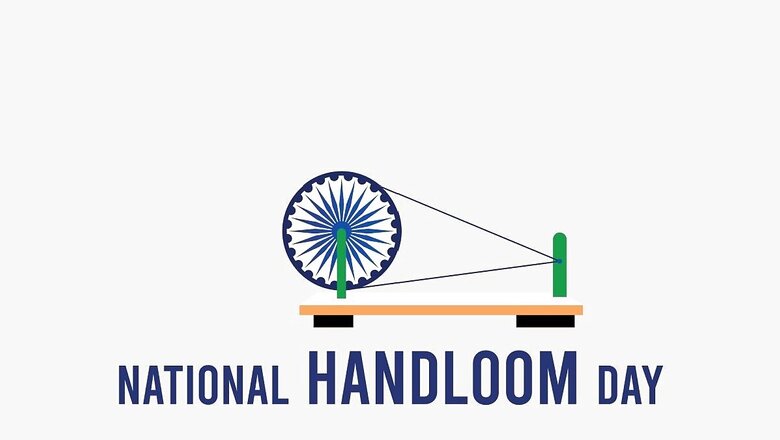
views
National Handloom Day, celebrated on August 7, honours India’s rich heritage of handwoven fabrics and promotes the handloom industry. Established in 2015 to honour the Swadeshi Movement, this day not only recognizes the usage of indigenous products, but also emphasizes the critical role handwoven textiles played in India’s freedom struggle. It’s an opportunity to celebrate the art of handwoven textiles while also supporting the livelihoods of countless weavers and craftspeople. Today, handloom weaving is one of India’s largest economic activities after agriculture, providing direct and indirect employment to 35.23 lakh weavers and allied workers. This sector contributes nearly 15% to the country’s cloth production and significantly impacts export earnings. India is responsible for 95% of the world’s handwoven fabric.
The handloom industry protects cultural heritage by conserving traditional processes and designs. For example, the Toda tribe of the Nilgiris is well-known for its unusual embroidery, with Toda shawls made entirely by women from the village. This custom not only preserves the tribe’s cultural identity, but also secures the survival of their distinctive craft. Similarly, the Ikat technique, which is popular in Telangana and Odisha, uses elaborate resist dyeing to produce patterns that are both ancient and ageless. Tangaliya shawls from Gujarat, with their distinctive raised dot designs, demonstrate the rich legacy of India’s handloom heritage.
Celebrating Tradition and Empowerment
Brands like Jaypore are instrumental in preserving traditional handloom crafts through direct collaboration with artisans across India. Their dedication to sustainable fashion is reflected in collections featuring Nilgiri Toda shawls, Andhra Pradesh Ikat, and Gujarat’s Tangaliya weave. Toda shawls, created exclusively by women from the Toda tribe, symbolize India’s rich handloom heritage. Jaypore supports these artisans by providing a platform to showcase their skills, thereby empowering them economically and socially while maintaining their cultural identity.
According to the Handloom Census 2019-20, India has approximately 3.52 million handloom workers, with 2.55 million being women. The sector employs 2.67 million weavers, 72% of whom are women. Handicraft exports (excluding handmade carpets) reached $1.80 billion between April 2023 and March 2024. The industry is projected to employ 6.89 million craftspeople, with a significant number of women.
Empowering women artisans is crucial for the handloom sector in sustainability. By providing skill development and market access, Jaypore enables artisans to achieve economic independence and gain recognition. This support enhances their communities through improved education and living standards. Jaypore’s efforts, including training and resources, help preserve traditional techniques and ensure their continuation for future generations.
Integrating Tradition with Contemporary Fashion
Indian fashion is increasingly embracing handloom textiles, seamlessly integrating them with modern design to craft garments that appeal to contemporary consumers while preserving cultural heritage. This fusion of tradition and modernity is essential for keeping the handloom sector vibrant and relevant in today’s fast-paced world.
Brands such as Fab India and W are at the forefront of this movement. W frequently features handloom textiles in its collections, celebrating the beauty and versatility of traditional weaves. By presenting these fabrics in innovative ways, the brand encourages consumers to appreciate and invest in handloom products, thereby promoting sustainable fashion and supporting artisan communities.
Looking to the Future
As National Handloom Day approaches, it’s essential to recognize and celebrate the collective efforts of artisans, designers, and consumers in preserving India’s rich textile heritage. Supporting handwoven products and making informed choices are key to sustaining these traditional crafts. The future of the handloom industry relies on collaboration among artisans, brands, and consumers. By valuing the skill and artistry of India’s weavers, we bridge tradition and modernity, fostering a sustainable fashion landscape.
This National Handloom Day, let us honour the craftsmen who protect India’s cultural heritage while also recognizing brands like Jaypore, W and Fab India that are at the forefront of sustainable fashion. Their dedication demonstrates how contemporary design can improve traditional crafts, assuring a bright future for handlooms. Consumers have an important role in this process. By supporting these products and respecting handcrafted excellence, we help to sustain handloom weaving, empower artists, and improve our cultural heritage. Together, we can create a fashion industry that honours both heritage and innovation.




















Comments
0 comment